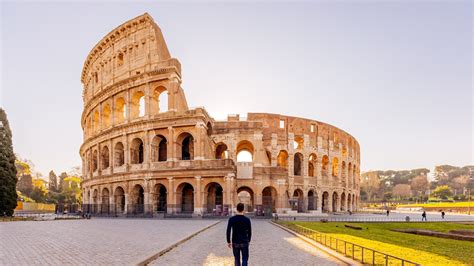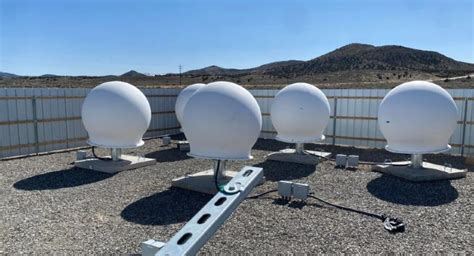
A supposed ancient Roman home unearthed in Alcamo, Sicily, has proven to be just a small part of a far larger and more significant archaeological find, with excavations revealing a sprawling complex of structures and artifacts that redefine the historical understanding of the region.
Initial expectations were significantly surpassed when archaeologists delved deeper beneath the surface, uncovering a complex that suggests a site of greater importance than a mere residential dwelling. “What initially appeared to be a simple Roman dwelling has revealed itself to be a much more complex and significant site,” stated Dr. Lorenzo Rubino, the lead archaeologist on the excavation. The emerging details indicate a potential public or commercial hub, indicating a far greater degree of Roman influence and activity in ancient Sicily than previously acknowledged. The site, located near Alcamo, now promises to offer invaluable insights into the economic, social, and political dynamics of Roman Sicily.
Unexpected Discoveries Prompt Further Investigation
The archaeological dig commenced with routine excavations aimed at uncovering more about the Roman presence in the region. The initial discovery of what appeared to be the remains of a Roman-era home set the stage for further inquiry. However, the deeper archaeologists dug, the more intricate the structures became. The layout extended beyond a typical household, and the artifacts uncovered pointed to a more diversified and potentially public function.
“We began to find elements that simply did not align with the idea of a private residence,” explained Dr. Rubino. “The scale of the construction, the types of materials used, and the nature of the artifacts all suggested something far grander.”
Evidence of a Commercial or Public Hub
The presence of numerous storage areas, large courtyards, and what seem to be the foundations of several shops or workshops suggest the site may have been a bustling commercial center. Further evidence supporting this theory includes the discovery of various tools, trade goods, and coin hoards. “The sheer volume of trade-related artifacts indicates a place of significant economic activity,” Dr. Rubino noted.
In addition to commercial indicators, there are also elements that suggest a public function. Archaeologists have found what they believe to be the remains of a small temple or shrine, as well as a large open area that could have served as a public gathering space. These findings hint at a possible civic or religious role for the site.
Implications for Understanding Roman Sicily
This discovery has significant implications for our understanding of Roman Sicily. Historically, the region has been viewed as a primarily agricultural area, with limited evidence of large-scale commercial or civic centers outside major cities. This new site challenges that view, suggesting that even smaller towns and regions may have been more economically and socially developed than previously thought.
“This site is rewriting our understanding of the economic and social landscape of Roman Sicily,” asserted Dr. Maria Costa, a historian specializing in Roman Sicily. “It shows us that even in what we considered to be rural areas, there was a significant degree of economic activity and civic organization.”
Artifacts Uncovered: A Treasure Trove of History
The artifacts uncovered at the site are providing invaluable insights into the lives of the people who lived there. Pottery shards, coins, tools, and jewelry have all been found in abundance, offering a detailed glimpse into daily life, trade practices, and cultural influences.
One particularly intriguing find is a series of well-preserved amphorae, which were used for transporting goods such as wine, olive oil, and grain. The amphorae bear stamps and inscriptions that could help to identify their origin and trace trade routes.
“The amphorae are like little time capsules,” said Dr. Elena Bianchi, an expert in Roman pottery. “They can tell us where goods were coming from, where they were going, and who was involved in the trade.”
Another significant discovery is a collection of coins, which date from various periods of Roman history. The coins provide valuable information about the economic history of the site, as well as the political and social context in which it existed.
The Importance of Preservation and Continued Research
Given the significance of the discovery, there is a strong emphasis on preservation and continued research. Archaeologists are working diligently to carefully excavate the site, document their findings, and preserve the artifacts for future study.
“This site is a treasure trove of history, and it is our responsibility to protect it and learn as much as we can from it,” stated Dr. Rubino.
Plans are underway to establish a museum or interpretive center at the site, where visitors can learn about the history and significance of the discovery. The site is also being carefully monitored to prevent looting and vandalism.
Collaborative Efforts and Funding
The excavation and preservation efforts are a collaborative effort involving archaeologists, historians, local authorities, and funding agencies. The project has received support from both public and private sources, reflecting the broad recognition of its importance.
“This is a project of national significance, and we are committed to providing the resources necessary to ensure its success,” said a representative from the Ministry of Culture.
Future Excavations and Research Directions
Archaeologists are planning to continue excavations at the site in the coming years, with the hope of uncovering even more information about its history and function. Future research will focus on analyzing the artifacts, reconstructing the layout of the site, and piecing together a comprehensive picture of life in Roman Sicily.
“We are just at the beginning of this journey,” said Dr. Rubino. “There is still much to be discovered, and we are excited to see what the future holds.”
The ongoing excavations promise to reveal even more about the intricacies of Roman life and trade in this region, potentially rewriting history books and challenging conventional wisdom about the Roman presence in Sicily.
The Broader Context of Roman Sicily
To fully appreciate the significance of this discovery, it’s important to understand the broader context of Roman Sicily. Sicily became a Roman province in 241 BC, following the First Punic War. Its strategic location in the Mediterranean made it a vital hub for trade and military operations.
Under Roman rule, Sicily became a major source of grain for the Roman Empire. The island’s fertile land and favorable climate made it ideal for agriculture, and its ports facilitated the export of grain to Rome and other parts of the empire.
In addition to grain, Sicily also produced wine, olive oil, and other agricultural products. The island was also rich in natural resources, such as timber and sulfur, which were in high demand throughout the Roman world.
Roman Sicily was a diverse and cosmopolitan society, with a mix of Roman, Greek, and indigenous cultures. The island’s cities, such as Syracuse, Catania, and Palermo, were centers of commerce, culture, and learning.
Impact on Local Community
The discovery has generated considerable excitement within the local community of Alcamo. Residents are eager to learn more about the history of their region and the people who lived there centuries ago. The excavation site has become a popular destination for tourists and locals alike, providing a boost to the local economy.
“This is a great moment for Alcamo,” said the Mayor of Alcamo. “It puts our town on the map and brings attention to our rich cultural heritage.”
Local businesses are already benefiting from the increased tourism, with hotels, restaurants, and shops reporting a surge in customers. The discovery has also created new job opportunities in the tourism and archaeology sectors.
Challenges and Considerations
Despite the excitement surrounding the discovery, there are also challenges and considerations that need to be addressed. The excavation and preservation of the site require significant resources, and there is a need to balance the interests of tourism with the need to protect the archaeological remains.
“We need to ensure that the site is managed in a sustainable way, so that it can be enjoyed by future generations,” said Dr. Rubino.
There are also concerns about looting and vandalism, and efforts are being made to protect the site from these threats. Security measures have been put in place, and local residents are being encouraged to report any suspicious activity.
The Significance of Alcamo
Alcamo, the town near where the Roman complex was discovered, has a history that stretches back centuries. Before the Roman era, the area was inhabited by the Elymians, an ancient people who also founded the nearby city of Segesta. The Romans later established a presence in the region, and Alcamo became an important agricultural center.
During the Middle Ages, Alcamo was ruled by various powers, including the Arabs, Normans, and Swabians. The town flourished as a center of trade and commerce, and its strategic location made it an important military stronghold.
Today, Alcamo is a vibrant town with a rich cultural heritage. Its historic center is home to numerous churches, palaces, and other architectural landmarks. The town is also known for its traditional crafts, such as ceramics and weaving.
The discovery of the Roman complex near Alcamo adds another chapter to the town’s long and fascinating history. It is a reminder of the region’s rich cultural heritage and the importance of preserving it for future generations.
Comparative Analysis with Other Roman Sites
To better understand the significance of the Alcamo discovery, it is helpful to compare it with other Roman sites in Sicily and beyond. Sicily is home to numerous Roman ruins, including the Villa Romana del Casale, a UNESCO World Heritage Site known for its stunning mosaics. Other notable Roman sites in Sicily include the ancient theater of Taormina and the Roman amphitheater of Catania.
Compared to these well-known sites, the Alcamo discovery may not be as visually spectacular, but it is significant for its potential to shed light on the economic and social life of Roman Sicily. While the Villa Romana del Casale offers insights into the lifestyle of a wealthy Roman family, the Alcamo site appears to represent a more typical community.
Outside of Sicily, there are countless Roman sites that offer valuable insights into Roman history. Pompeii and Herculaneum, preserved by the eruption of Mount Vesuvius, provide a unique glimpse into daily life in a Roman city. Other important Roman sites include the Colosseum and the Roman Forum in Rome, as well as numerous Roman villas and towns throughout Europe and North Africa.
The Alcamo discovery adds to this rich tapestry of Roman history, offering a new perspective on the Roman presence in Sicily and the broader Roman world.
The Future of Archaeology in Sicily
The Alcamo discovery underscores the importance of continued archaeological research in Sicily. The island is a treasure trove of historical artifacts, and there is still much to be discovered.
Archaeologists are constantly uncovering new sites and artifacts, adding to our understanding of Sicily’s rich cultural heritage. Recent discoveries include a Greek temple near Agrigento and a Punic shipwreck off the coast of Marsala.
The future of archaeology in Sicily is bright, with ongoing research projects and new technologies promising to reveal even more about the island’s past. The Alcamo discovery is just one example of the exciting discoveries that await us.
Expanding the Scope: The Role of Technology
Modern technology is playing an increasingly important role in archaeological excavations and research. Techniques such as ground-penetrating radar (GPR) and aerial photography can be used to identify potential sites and map their layout before excavation begins.
3D modeling and virtual reality are also being used to reconstruct ancient sites and create immersive experiences for visitors. These technologies can help to bring the past to life and make it more accessible to a wider audience.
In the case of the Alcamo discovery, technology has been used to create detailed maps of the site and to analyze the artifacts that have been uncovered. This has helped archaeologists to gain a better understanding of the site’s history and function.
The Human Element: Stories from the Past
While archaeology is often focused on the material remains of the past, it is important to remember that these objects were once used by real people. Each artifact tells a story, and by studying these objects, we can gain insights into the lives, beliefs, and customs of the people who lived in Roman Sicily.
The pottery shards, coins, and tools that have been found at the Alcamo site offer glimpses into the daily lives of the people who lived there. The amphorae tell us about trade routes and economic activity, while the jewelry and other personal items reveal aspects of their social status and personal identity.
By piecing together these fragments of the past, archaeologists can create a richer and more nuanced understanding of Roman Sicily.
The Long-Term Impact
The discovery near Alcamo represents more than just another archaeological find; it signifies a turning point in our understanding of Roman Sicily and potentially the broader Roman Empire. The implications of this discovery are far-reaching, extending beyond academia and impacting local communities, tourism, and cultural preservation efforts.
The influx of tourism can stimulate economic growth, create jobs, and promote local businesses. The preservation and interpretation of the site can also raise awareness of the region’s cultural heritage and foster a sense of pride among local residents.
Furthermore, the lessons learned from this discovery can inform future archaeological research and preservation efforts in Sicily and beyond. By adopting best practices in excavation, documentation, and conservation, we can ensure that these invaluable historical resources are protected for future generations.
Frequently Asked Questions (FAQ)
1. What was initially discovered at the site near Alcamo, Sicily? Initially, archaeologists believed they had found the remains of a simple Roman home. Further excavation revealed a much larger and more complex site, suggesting a potential commercial or public hub.
2. What evidence suggests the site was more than just a private residence? The scale of construction, the types of materials used, numerous storage areas, large courtyards, foundations of shops/workshops, tools, trade goods, and coin hoards indicated significant economic activity and a possible public function.
3. How does this discovery change our understanding of Roman Sicily? Historically, Roman Sicily was seen as primarily agricultural. This discovery challenges that view, suggesting even smaller towns and regions had significant economic activity and civic organization.
4. What types of artifacts have been found at the site? Artifacts include pottery shards, coins dating from various Roman periods, tools, jewelry, and well-preserved amphorae used for transporting goods like wine and olive oil.
5. What are the plans for the site moving forward? Plans include continued excavations, artifact analysis, site reconstruction, establishing a museum or interpretive center, and ongoing preservation efforts to protect the site from looting and vandalism.
This discovery in Alcamo is a stark reminder that the earth still holds many secrets about our past. As archaeologists continue their work, there is no telling what other fascinating revelations will come to light, forever changing our perspective on ancient civilizations.









